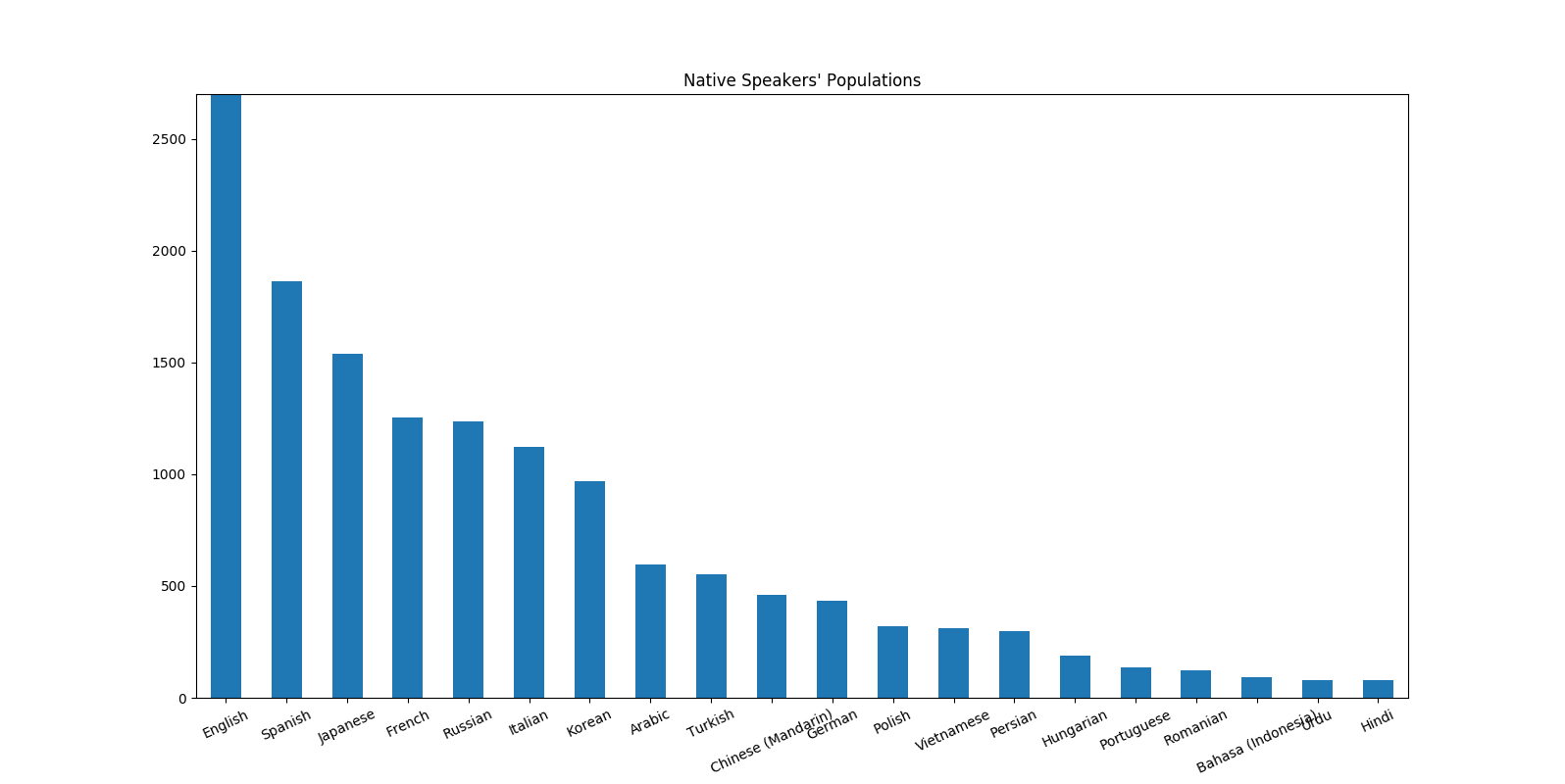Conversation Exchange Statistics
post by lsusr · 2021-03-16T08:50:03.393Z · LW · GW · 0 commentsContents
Native Speakers English Speakers' Target Languages Cultural Connection None No comments
Conversation Exchange is a website where you can find someone to practice a foreign language with. For example, if you are an American learning Russian then you can make friends a Russian who wants to practice their English.
Last year I sampled the profiles of 20,340 Conversation Exchange users.
Native Speakers
Here is a graph of the top 25 languages on the website as measured by how many native speakers had public[1] Conversation Profiles active in the time period I sampled.

What happens if we control for native speakers' population size by dividing it away?

The top non-English languages per capita are the European languages French, Italian and Hungarian, followed by Japanese and Korean. Mandarin, Portuguese and Hindi drop to the bottom due to their gigantic populations and relative isolation from the English-speaking world.
English Speakers' Target Languages
The most important language in the world to know is English. Almost[2] all Conversation Exchange users who don't speak English natively have English as their target language to learn.
What do English speakers want to learn?

Spanish is at the top because if you look at a map then the English-speaking world borders more Spanish speakers than speakers of any other language. Japanese, French, Korean and Italian are near the top because they carry cultural cachet in the English-speaking world.
Cultural Connection
Generally-speaking, if a language has strong ties to the English-speaking world then lots of English speakers want to learn the language and lots of native speakers join Conversation Exchange to improve their English. Spanish and Chinese are weirdly asymmetric.
- Chinese: Conversation Exchange could be too intimidating to use. The Chinese-speaking Internet is isolated from the rest of the Internet by culture, language and the Great Firewall. Basically every Chinese-speaking person I have encountered on Conversation Exchange is either highly educated or works in the export industry. The result is asymmetry, with disproportionately more English speakers seeking go learn Chinese than Chinese speakers seeking to learn English.
- Spanish: At the time of writing this, my hypothesis was that lots of English speakers (mostly Norteamericanos) want to learn Spanish so they can talk to Hispanics and Mexicans. There is a gigantic Spanish-speaking population living in South America. My hypothesis was the Hispanics and Mexicans (and perhaps Spaniards) dominate the Spanish speakers using Conversation Exchange whereas a gigantic Spanish-speaking population lives in South America and has weak cultural ties to the United States. Was I correct?
A quick search on Conversation Exchange indicated that the native Spanish speakers are mostly Spaniards, with a few Mexicans mixed in.
In retrospect, it was silly for me to think that Hispanics living in the United States would use Conversation Exchange. I also under-estimated the cultural closeness of Spain to the United States. I was correct about few South Americans using Conversation Exchange.
If we divide the "English Speakers' Aspirations" graph by the population of the target languages then we can measure the per capita cultural power of different populations on the English-speaking world.

I do not know what Estonia is plotting[3]. Otherwise, everything makes sense. Especially Hebrew.
This post contains data from public profiles only. I do not have data on private profiles. ↩︎
I removed the handful of non-native-English-speaking weirdos who chose to learn not-English. I also removed anyone who spoke more than one language natively. ↩︎
Estonia could just be a random outlier related to its small sample size of 44[4] language learners. It may make sense to just ignore everything to the right of Hebrew. ↩︎
44 English speakers want to learn both Estonian and Finnish in my sample, which is why you see Finnish in one graph and Estonian on the other. Finnish has a population of 5.8 million speakers. Estonian has 1.1 million. ↩︎
0 comments
Comments sorted by top scores.